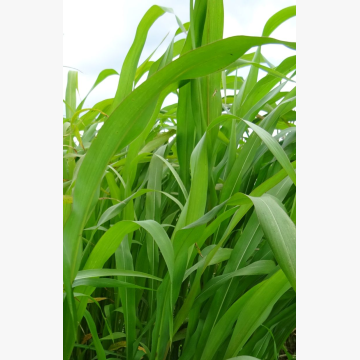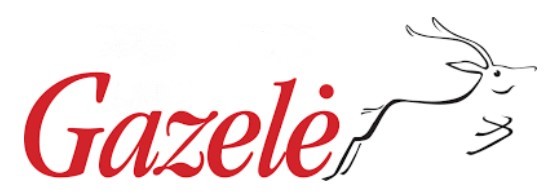- Home
- Seeds
- Fodder crops
- Sorghum and Sudan Grass hybrid
- Sorghum and Sudan Grass hybrid GARDAVAN
FOR CONSULTATIONS APPLY TO:
Commercial director
Lina Smalskienė
tel. +370 618 02 551
e-mail linak@agrolitpa.lt
Sales manager
Tautvydas Kliučininkas
tel. +370 681 35 093
e-mail tautvydask@agrolitpa.lt
Sales manager
Eglė Petkevičienė
tel. +370 626 95 458
e-mail eglep@agrolitpa.lt
Sales manager
Kotryna Nakrošytė
tel.: +370 601 39 282
e-mail kotryna@agrolitpa.lt
Sorghum and Sudan Grass hybrid GARDAVAN
An early, high yielding, drought-tolerant Sorghum-Sudangrass hybrid for forage and fodder production, catch crop and energy purposes
- Alternative to corn in fodder crop rotation, especially on light and very light soils
- One of the earliest sorghum-sudangrass hybrids on the market
- Very low water requirement
- Stable yield
- Fast germination and good productivity
- Productivity can be 80-120 t/ha of green mass and 20-25 t/ha dry matter, depending on water availability and soil fertility, other growing conditions
- Fast initial development
- Quickly covers the inter-rows
- Number of days from sowing to heading – 72-74 days
- Thin and juicy stem
- Excellent leaf/stem ratio
- High tillering
- Plant height – 2-3 m (elsewhere – 170-220 cm)
- Exceptional stress resistance
- High drought resistance
- Sorghum is drought tolerant due to its leaves that evaporate less water and its branched root system with good suction capacity
- Due to its good drought tolerance, the plants can produce better yields than maize in dry areas
- Early maturity
- Grows quickly for early grazing
- Two cuts are possible. The first cut could be done before panicle heading, leaving 15 cm of stubble for regrowth. The second cut is made at the same time as the corn harvest for silage
- The first cut consists 65 % of the total harvest
- Very resistant to diseases
- Resistant to corn pests – European corn borer (Ostrinia nubilalis Hbn.) and Western corn rootworm (Diabrotica virgifera virgifera Le Conte)
- Early harvest, suitable for cattle feeding
- Excellent nutritional value when cut before heading
- Suitable alternative for making silage, hay with a high hemicellulose content for cattle or for direct feeding
- Used for silage, grazing
- Before ensiling/fermentation, the dry matter content should be checked, especially if the crop is harvested in the first half of September. The recommended dry matter content in the plant should be 25-30 % (about BBCH 50-51)
- Also suitable for haymaking
- Slightly attractive to wild boar
- Liked by mouflon, Sika deer and red deer, other
- Suitable as a cover crop when growing pheasants
- Suitable for biogas production
- Suitable for growing as catch crop
- It is an ideal catch crop after barley, produces a lot of biomass
- The roots ensure good soil structure formation
- Suitable for dry areas
- Suitable for all types of soil, including clayey and poorly structured soils (if they have sufficient water reserves)
- Required annual rainfall – 400–600 mm
- Germination requires a soil temperature above 12-14 °C, otherwise it will grow poorly during early development
- Sowing depth 2-3-4 cm
- Tolerates monoculture
- Grown alone, not very suitable for mixtures
- When sowing pastures, row spacing 15 cm
- When sowing as a cover crop for pheasants – row spacing 35 cm
- Fertilize 100-150 kg/ha N, 30 kg/ha P2O5, 200 kg/ha K2O (elsewhere – before sowing 40-60 Kg/ha P2O5 and 80-100 Kg/ha N)
ATTENTION !!!!
Hybrids can accumulate toxic substances in the early stages of development. To avoid exposure to these substances, avoid: mowing at an early stage of growth, abundant fertilization with nitrogen fertilizers. Start grazing when the plants reach a height of 40-50 cm. Also, the amount of toxic compounds can be increased by long-term drought, sudden temperature fluctuations or frost.
The varietal parameters may differ from those indicated here when the testing circumstances differ from quondam
Recommended sowing rate for biomass production: 45-55 plants/m², or 15 kg/ha, inter-rows 25-30 cm
Recommended sowing rate when growing for N binding: 90–110 plants/m², or 30 kg/ha
Keravos sreet. 17, Kerava,
LT-38 131 Panevėžys district, LITHUANIA
Enterprise's code 168598128
VAT code LT685981219
Tel. +370 615 11 315
E. mail info@agrolitpa.lt




.JPG)


